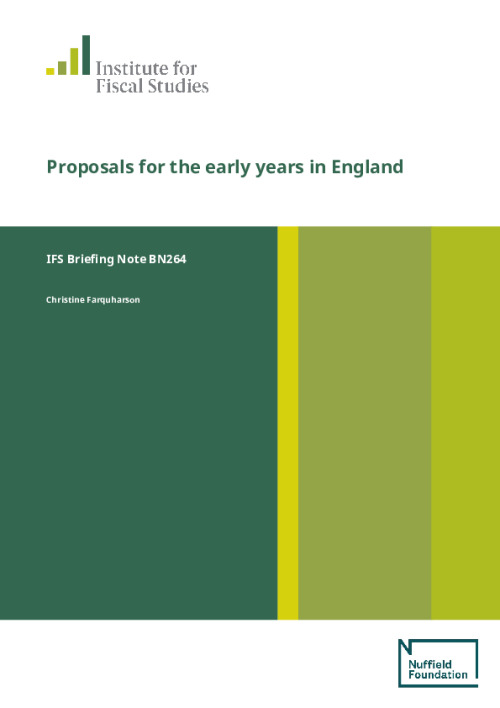Support for childcare and the early years is shaping up to be a major issue in this election campaign. To date, both the Labour party and the Liberal Democrats have promised enormous increases in the generosity of England’s free childcare system,[1] with money for extra funding per hour, extra children, extra hours and – in the Liberal Democrats’ case – extra weeks of the year. The Conservative party is reported to be considering its own package of reforms.
In this briefing note, we analyse the early years packages from the Labour party and the Liberal Democrats. We provide context for how these compare to the current system of childcare support in England and present our estimate of the cost of the individual policies underlying these packages.
Key findings
• Both the Labour party and the Liberal Democrats have announced early years packages that feature unprecedented increases in spending on free childcare. We estimate that Labour’s free childcare policies would cost £2.6 billion in 2024 (in today’s prices) once savings through the tax and benefit system are taken into account – an 80% increase on spending under current plans. The Liberal Democrats’ plans would go even further: our costings suggest their plans would increase spending by around £7 billion, or more than three times current plans.
• Delivering such big increases in spending in such a short time would be immensely difficult. Both parties have promised to increase per-hour funding, which would help ease pressures on providers, but even so the childcare market would be asked to make very big changes very quickly. Putting mechanisms in place to ensure the money is spent well, on delivering high-quality childcare, would be crucial to ensuring the success of these policies.
• Both parties plan to make full-time free childcare available to all 2-, 3- and 4-year-olds. In doing so, they would remove all of the targeting (at working families and disadvantaged children) in the current free childcare system at these ages. The Liberal Democrats would also extend coverage to children in working families at younger ages, between 9 months and 2 years old. Many parents with young children would enjoy lower childcare costs under Labour’s proposals and even more would benefit from the Liberal Democrats’ proposals.
• Both parties are proposing increases in the per-hour funding rates, especially for 2-year-olds. Labour is proposing to increase the 2-year-old funding rate to £9 by 2024, while the Liberal Democrats appear to be targeting £7.22 in the same year (£8.17 and £6.56 in today’s prices, respectively). The average hourly funding rate for 2020 is currently set to be £5.44 (in today’s prices), so these would be real-terms increases of 50% and 21% respectively. For comparison, per-hour spending in 2018 was 20% higher than 14 years earlier, in 2004.
• Funding rate increases for 3- and 4-year-olds are less generous, though still substantial relative to recent history. Labour would boost the minimum rate to £5.60 by 2024 (£5.36 for the Liberal Democrats). However, more than a sixth of local authorities are already above the Labour floor.
• One of the biggest drivers of the cost of childcare policies is the take-up of them. We have based our costs around the take-up of parts of the current free childcare system. Of course, the parties might expect take-up to turn out differently, for example if an information campaign encourages more families to enrol in the programme or if more free hours per week boost parents’ working hours and childcare needs. We show how sensitive the costs we estimate are to different take-up rates.
[1] Free childcare is delivered through the Department for Education, so policy in Scotland, Wales and Northern Ireland is handled by the devolved administrations.









